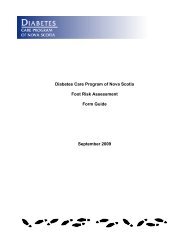CDE Appendix 1 Literature Review - Central East Local Health ...
CDE Appendix 1 Literature Review - Central East Local Health ...
CDE Appendix 1 Literature Review - Central East Local Health ...
You also want an ePaper? Increase the reach of your titles
YUMPU automatically turns print PDFs into web optimized ePapers that Google loves.
The Culture, Diversity and Equity Project: <strong>Literature</strong> <strong>Review</strong><br />
Figure 3.2: <strong>Health</strong>y People 2010 Theoretical Model<br />
Source: Raphael and Bryant, 2006, p.45.<br />
Critics argue that while the <strong>Health</strong>y People 2010 plan mentions broader determinants of health (as reflected in<br />
the above health model), the prioritized indicators and concrete strategies pursued in practice neglect broader<br />
determinants of health, being ‘firmly planted in the biomedical and behavioural public health model’ (Raphael<br />
& Bryant, 2006).<br />
• The ‘Steps to a <strong>Health</strong>ier US’ is another major US Federal policy aimed at health promotion and disease<br />
prevention that was launched in 2003 by the US Department of <strong>Health</strong> and Human Services. This policy also<br />
refers to health disparities, yet like <strong>Health</strong>y People 2010, neglects structural factors, placing the emphasis<br />
instead on ‘physical fitness, prevention, nutrition and health lifestyles’ (see DHHS, 2003 www.<br />
healthierus.gov/steps/index.html; also see Exworthy et al., 2006).<br />
• One of the more ambitious avowed aims of the US Federal Bureau of Primary <strong>Health</strong> Care is‘100% access<br />
and 0 disparities’ (Exworthy & Washington, 2006)<br />
3. To improve cultural competency<br />
Culturally and Linguistically Appropriate Service (CLAS) Standards: The Office of Minority <strong>Health</strong> of the US<br />
Department of <strong>Health</strong> and Human Services developed 14 National Standards for Culturally and Linguistically<br />
Appropriate Services (CLAS) in healthcare in 2001. The CLAS Standards were developed with several purposes in<br />
mind including:<br />
• “To correct inequities that currently exist in the provision of health services and to make these services<br />
more responsive to the individual needs of all patients/ consumers… especially…the needs of racial, ethnic,<br />
and linguistic population groups that experience unequal access to health services”;<br />
67

















